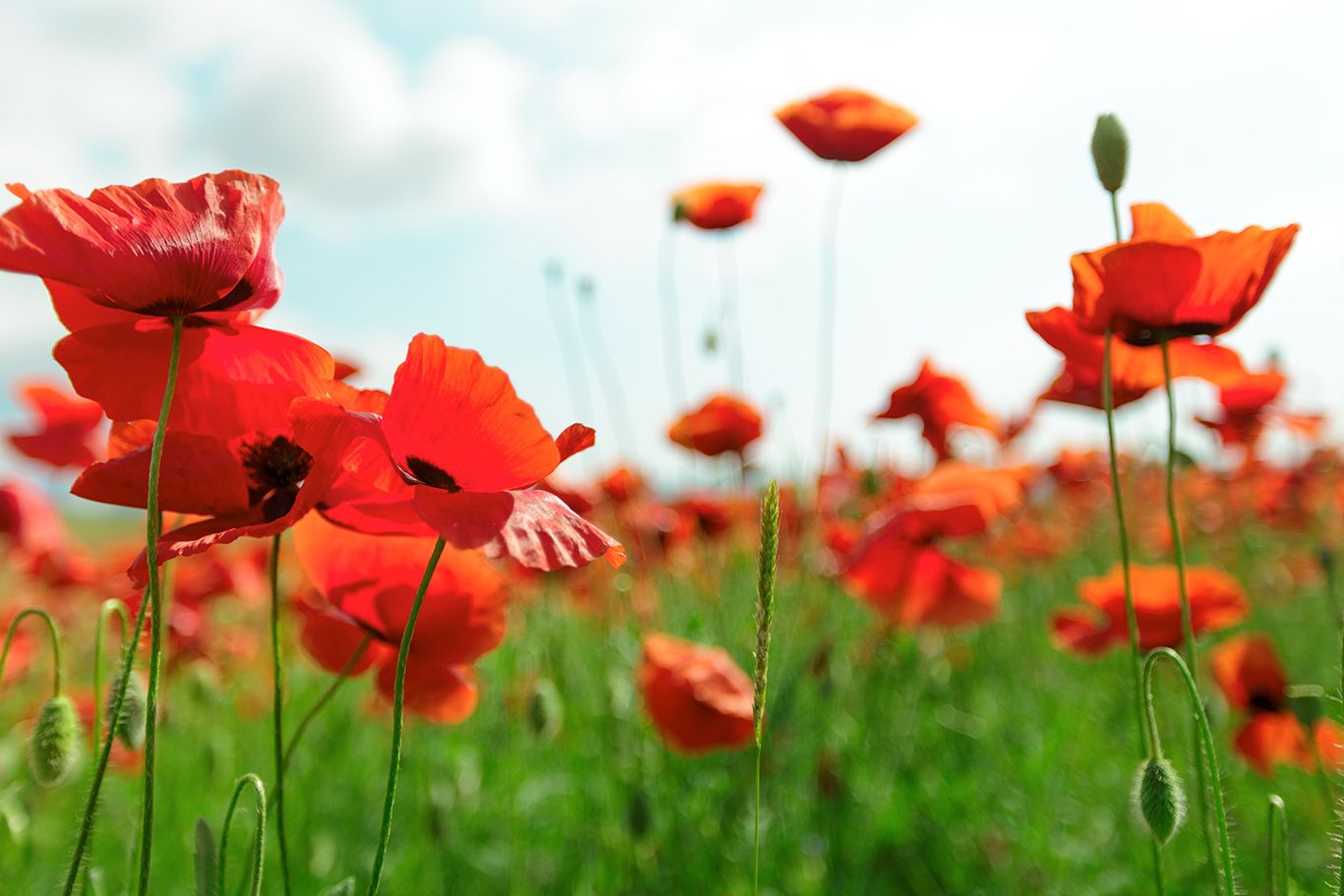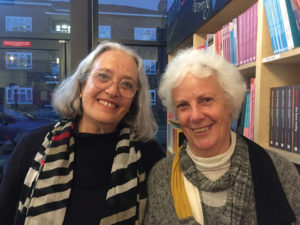Encourage the inner intelligence of the body

Das nächste Workshop „The whole body-breathing“ mit den beiden Referentinnen Sandra Sabatini und Michal Havkin findet von 6. – 8. 10.2023 in Innsbruck statt. Wir wollen die Zeit bis dahin nützen, um uns noch eingehender auf die Arbeit dieser beiden Pionierinnen auf den Spuren der Arbeit von Vanda Scaravelli vorzubereiten. Warum sich nicht einmal lesend auf ein Workshop einstimmen?
Alexandra Eichenauer-Knoll hat es probiert und in ihr gemeinsam geschriebenes Buch „The whole body-breathing“ hineingeschnuppert. Das Interview erfolgte dann auf Englisch per E-Mail, tatkräftig unterstützt von Elisabeth Ulbel, die die Workshops der beiden in Wien organisiert. Die deutsche Übersetzung ist als PDF am Seitenende zu finden.
Alexandra: I do not know you personally nor have I ever attended to one of your workshops. I just spend some time with your wonderful book „The Whole Body Breathing“. You describe there a system of very tender, slow and economic small exercises, you call them proposals, which help to go deeper, into bodyfeelings, into finding and touching ground. I know such movements in preparation of an asana, but you make them the center of your practice. Your approach seems very special to me. The movements have little in common with normal asana poses and yet they are 100% yoga in the aspects of deepening the breathing, guiding the energy and focusing on body feelings right now. Why do you think it is necessary to become so slow and so reduced in Yoga-poses?
Sandra and Michal: Our modern life is dictated by time thickening faster and faster and forcing us to move in accordance with quick abrupt and compulsive movements. The need to go slow becomes essential in order to counterbalance this haste and hurry that permeate everything around us, forcing on us unhealthy and disruptive movements which take us away from our centre.
It is only when we lower the speed, that we meet again our capacity to listen and to follow the body’s inner intelligence. Along with the fastness comes the ambition: To perform, to show off, to achieve and to compete which is misleading and humiliating in the yoga search of a true practitioner.
From this attitude we have to move away and go back to small, delicate, harmonious and circular movements that are friendly to the organism and happily accepted by it.
Alexandra: You’ve been teaching together for many years and have developed a method to „discover the subtle rhythms of Yoga“. Besides your common focus on Yoga, Sandras work is influenced very much by Vanda Scaravellis theories and meditation practice with Thich Nhat Hanh while Michal as a former professional dancer integrates Feldenkrais-techniques. Is there a red thread between your different approaches, a basic consense between both of you?
Sandra and Michal: The red thread between Sandra ‘s approach to the whole body and Michal ‘s is that they both stimulate and awaken curiosity to minute movements and sharpen attentiveness in the practitioner. Once the attention is shifted inside to the breath, and outside to the force of gravity and the awareness of space around, each tiny movement has an everlasting echo inside the body.
The body is naturally driven in due time to feel whole and healthy, as it is happily reconnected to Earth and Space by the practice.
Unfortunately the Asanas have become the aim of the practice while in our approach they are like toys, instruments to play with, enjoy and dismiss. As the real essence of the practice is a meditative state of body and mind infused into one.
Alexandra: In this book you suggest various exercises to go deeper along the spine, along the chakras. In this context you use the term whirlpool. What do you mean by this?
Sandra and Michal: In this search to live fully inside our bodies, touch and visualization play a very important role.
When you bring your hand to the heart or to the navel and gently rub the area with circular motions, you immediately feel warmth rising.
The place becomes alive and responds to your gentle touch. There are hundreds of places that joyfully awaken when touched by your hand or by the words of a teacher or by visualization.
As everything in nature moves in spiralling movements the circular touch, the image of a whirlpool, or words that remind these places of their existence as vortexes, all convey more brightness and vitality to them.
The word chakra needs to be refilled with physical experience and significance so that these places regain new livelines.
Alexandra: Mrs. Scaravelli studied with Iyengar. Your approach to breathing is so subtle and I think quite different. Do you still integrate classical pranayama in your teaching?
Sandra and Michal: Like in the poses, so in the breathing techniques there has to be a challenge for a modern yoga practitioner. A subtle way of entering them, of revisiting them and finding them new and appealing.
To be innocent and explorative like a child is the tool.
So traditional poses and classic yoga breathing patterns are revisited after being pulled naked of all restrictions and impositions accumulated in the course of decades.
The whole being needs and enjoys the freedom of experimenting when there is a playful mood to sustain the practice.
Natural breathing is restored and enjoyed fully by the whole body that can then take different breathing patterns as colourful toys to play with. In Allegria as Vanda used to say.
Alexandra: In the chapter „The eyebow centre“ you write: „The aim of transforming the whole being into a hollow green bamboo cane feels closer and more tangible.“ So this is the picture of peace and freedom you offer us. It is not a sea without any waves or a candle light without any wind, but a bomboo cane without any knots. Tell me more about this picture, please.
Sandra and Michal: The image of the hollow young bamboo comes from the Song of the Maha Mudra by Tilopa (988-1069) as sung to his disciple Naropa, a very beautiful text where at one point there are two verses.
Empty your mind and think of nothing
Like a hollow bamboo rest at ease in your body.
Vanda’s teachings emphasize the standing position as a posture where everything you need to discover in your yoga path is written there.
So the image of a green, adaptable and young bamboo cane that can easily breath, easily adjust to gravity and easily grow into space became a powerful visualization.
As practitioners we should carefully avoid any kind of imposition or ambition, no knots in fact, to disturb its unfolding.
Alexandra: We hope, you will come to Vienna in October 2021. In the meantime we recommend everyone, who is interested in your work, to read one of your books. But of course, this is not the same as to see you personally. What can we expect in the workshop then? What is your special way of teaching together?
Sandra and Michal: Through the years we have been teaching together we have developed a language that speaks directly to the body, to the organism by passing the head with its resentment, criticism and analytic approach. It is a language that the body recognises as its own because of its simplicity and innocence.
It is a practice that invites and stimulates each practitioner to be totally in his/hers body and learn to move with it in order to encourage the inner intelligence of the body to sprout and blossom fully.
Our book – The Whole Body Breathing does not contain poses out of a precise choice but in our classes and workshops we do explore them in depth.

Das Gespräch in einer deutschen Übersetzung zum Download:
Langsam lesen – weiterführende Buchtipps:
BÜCHER:
ATEM – DIE ESSENZ DES YOGA (SANDRA SABATINI)
THE WHOLE BODY BREATHING (SANDRA SABATINI UND MICHAL HAVKIN)
LIKE A FLOWER (SANDRA SABATINI)
AUTUMN WINTER SPRING SUMMER– YOGA THROUGH THE SEASONS (SANDRA SABATINI UND SILVIA MORI)
AUDIO CD:
BREATH (SANDRA SABATINI)
THE SMILING BREATH (SANDRA SABATINI)